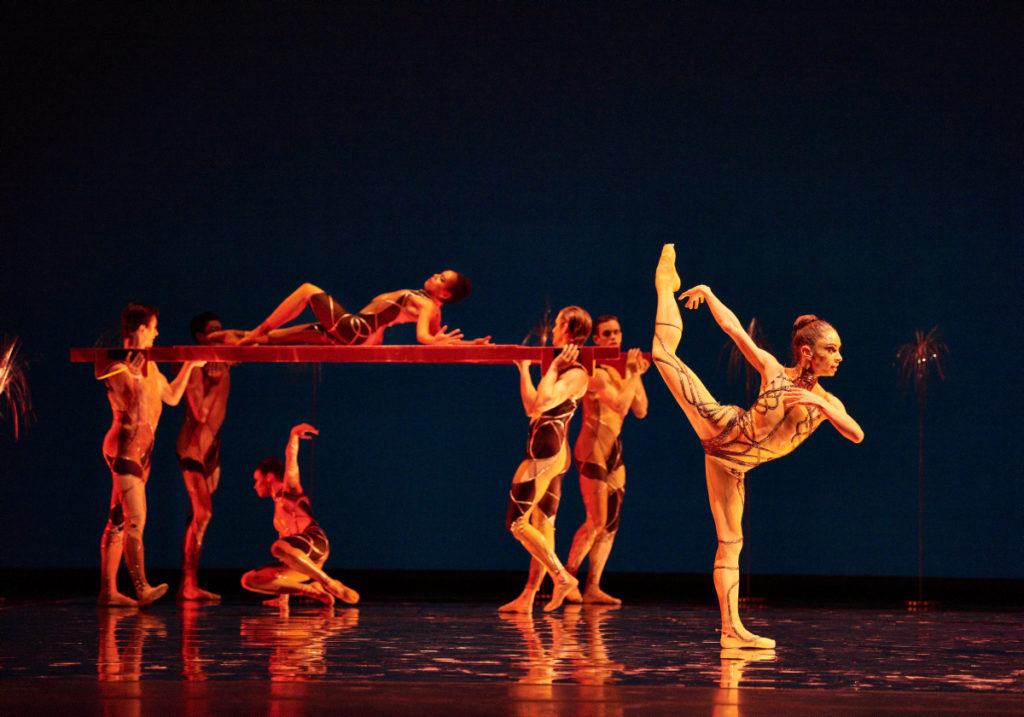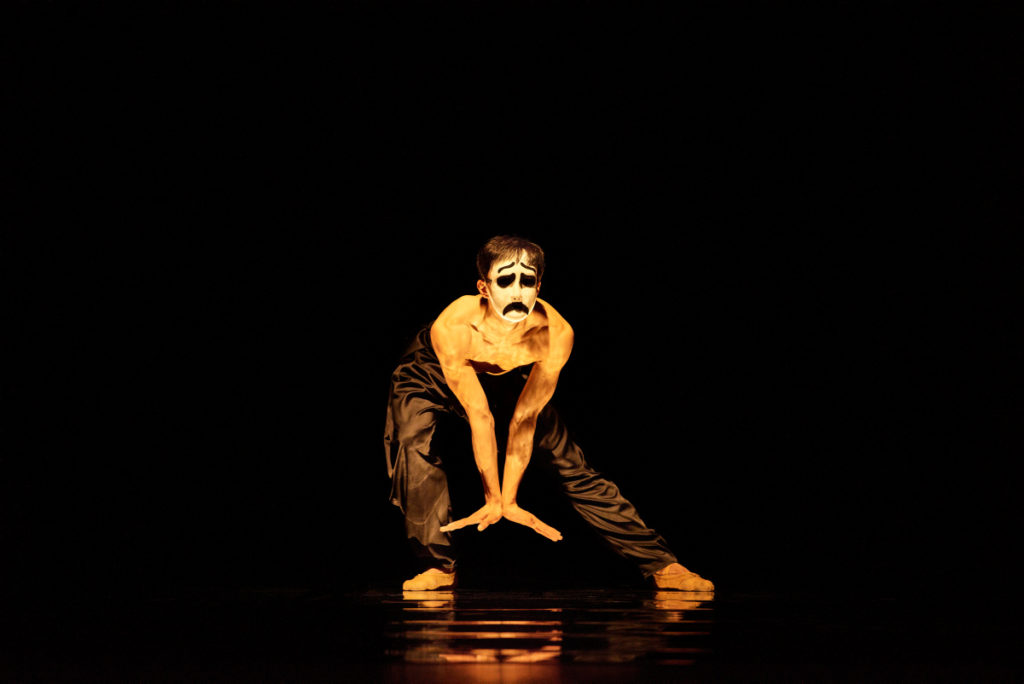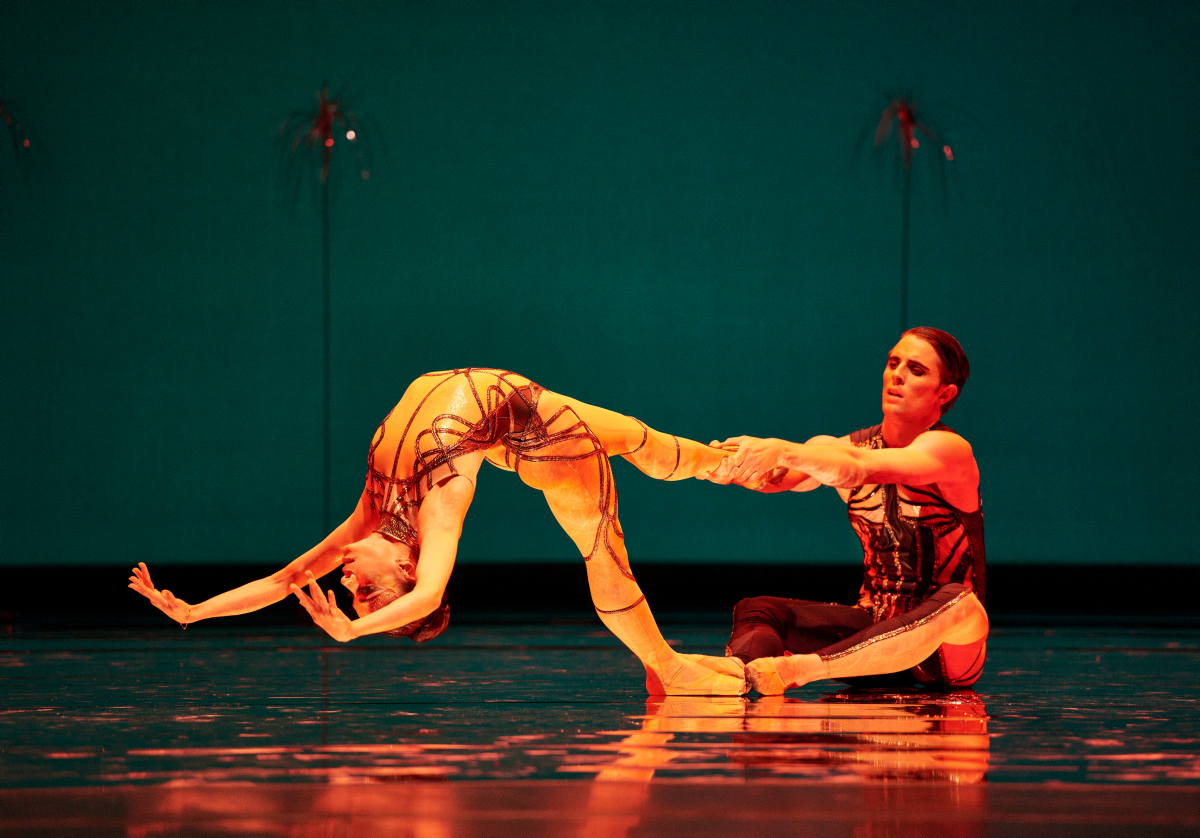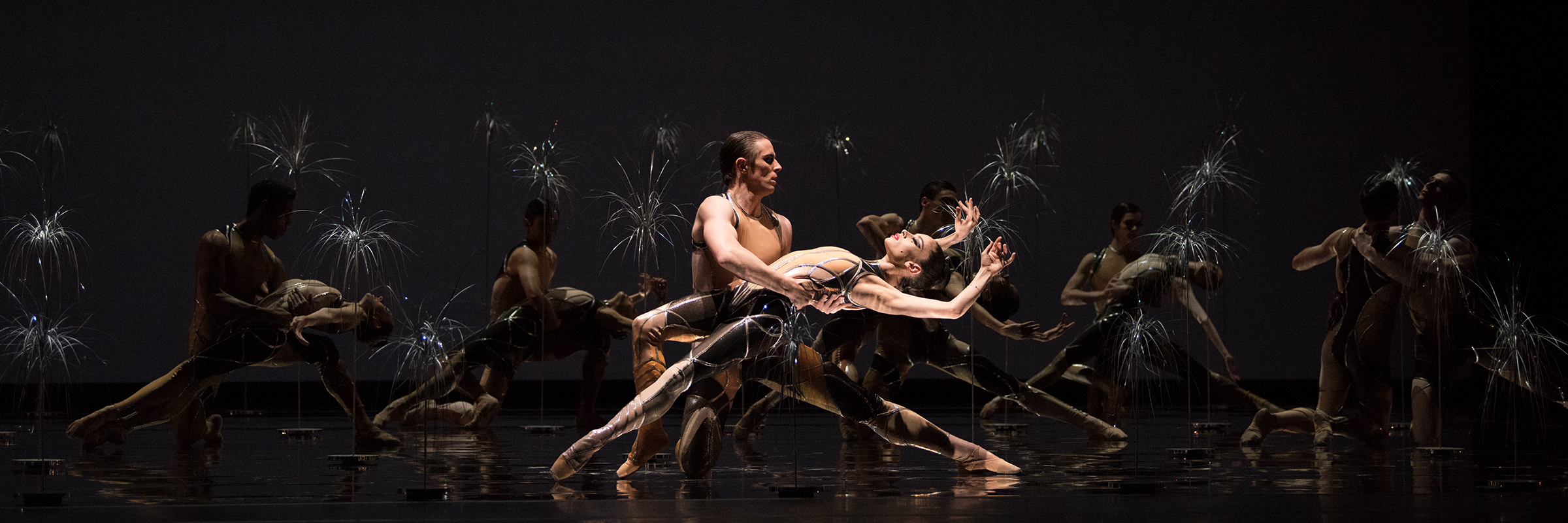About Arthur Pita’s Björk Ballet
A Ballet Rave Featuring the Music of Superstar Björk
There might be no better combination of artists than choreographer Arthur Pita and Icelandic music superstar Björk. If you’ve never seen a ballet rave—and who has?—get ready. Pita delivers that and more with his second piece for the Company, Björk Ballet, an imaginative spectacle that will make you want to jump up and dance.
Pita never forgot the moment he first heard Björk’s music. During his training at London Contemporary Dance School, a friend introduced him to Björk’s album Debut, “which I loved so much,” he says. In thinking about his music for the Unbound festival, he wondered what he could do to make the dancers feel unbound. “And I thought, ‘The music is going to drive them,’ and immediately Björk made sense,” he says. “The music is so theatrical—it’s big, but in a modern way.” And, he reasoned, Artistic Director and Principal Choreographer Helgi Tomasson is Icelandic. “I knew [Björk’s music] would mean something to him,” says Pita.

In this ballet’s episodic form, Björk’s music provides a framework for fragmented stories, dances that are more thematic than descriptive. A lone fisherman provides a ghost of a narrative and, because Björk’s music often references nature, a link to the natural world. Though the set is minimal and abstract, tall grasses create a focal point throughout the ballet. At first they “appear magically,” Pita says; then the dancers rearrange them, emphasizing humans’ relationship to the Earth.
Pita sees the fisherman as “the simple human being.” He wears two masks, one happy, one sad—an idea that came to Pita because of a duality he sees in Björk. “She’s this very playful, naughty fairy, dancing nymph, otherworldly creature, full of light and love,” he says. “And then you’ve got this very deep, mournful, sorrowful, almost tragedy in some of her songs. So it’s like the theater masks.” The fisherman’s journey ends with “The Anchor Song,” which Pita says he read “as a lovely kind of sailor song.” The lyrics—“I live by the ocean / and during the night / I dive into it / down to the bottom / underneath all the currents / I drop my anchor / and this is where I’m staying / this is my home”— might be a suicide note or a love letter to one’s native land; either way, the song conveys a feeling of peace.

Woven around the fisherman’s tale are snippets of love stories. In “Bachelorette,” Björk sings that “she’s ‘a path of cinders’ for the person to step on,” Pita says. At the other extreme, “All Is Full of Love” is dangerous, “about falling off things and running and catching and being held. Tempestuous, deep-rooted, immense love,” he says. “Hyperballad” is even more dangerous. Paraphrasing the lyrics, Pita says the song is about “imagining ‘what it feels like to jump off a cliff just so that when I wake up I can feel safe with you.’ That’s so extreme.”
The fisherman, the pas de deux couples, the pixie-like creature who flits through the action—everyone in this ballet is Björk. In trying to capture her essence, Pita goes to extremes with his movement, giving the dancers flicks, squats, and lunges along with concave shapes, flung arms, and references to nature. There are cantilevered duets with an underwater quality and a classically based octet, set to “Frosti,” that Pita says “should look like a ballerina music box on acid.” And then there’s “Hyperballad,” Pita’s ballet rave, with a long jumping sequence to a pumping, driving rhythm. “It’s a metaphor—jumping for joy, jumping for love,” he says. As the ensemble moves into a sideways kick step Pita borrowed from Björk herself, one couple moves into a slow, sinuous, stretched pas de deux, and the pixie-like figure darts past. It’s an enchanting and exhilarating moment.

Ultimately, Björk Ballet is about birth, life, sex, and death, he says. When Björk sings—about love or joy, sex or death—“it comes from such a human place,” Pita says. For him, “All Is Full of Love” says everything. “It’s such a beautiful lyric—‘You’ll be given love,’ and ‘You’ll be taken care of,’ ” he says. “What a beautiful message! We have to remember that we do have love in the world.”
By Cheryl A. Ossola
Header photo: SF Ballet in Pita’s Björk Ballet // © Erik Tomasson








